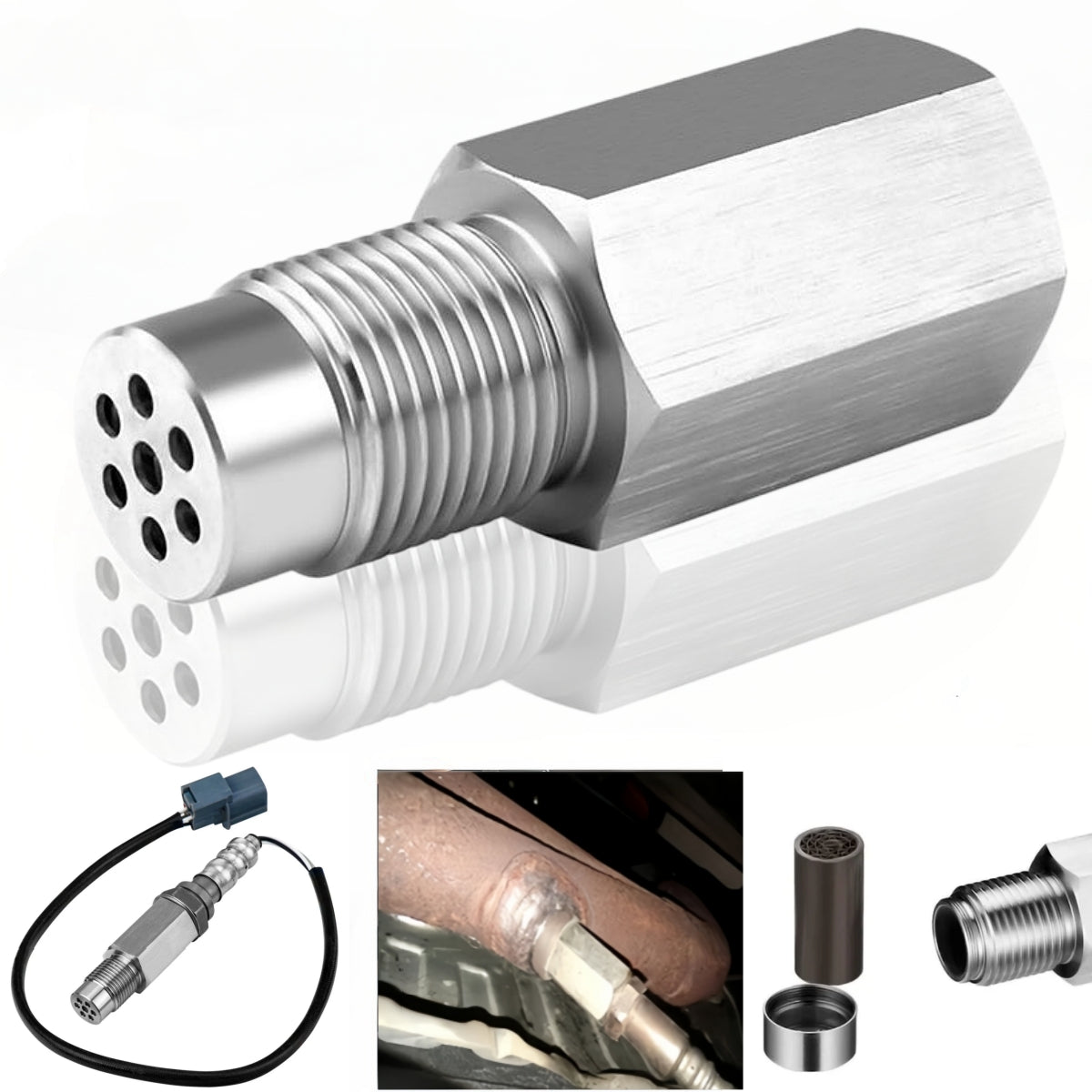Enhancing Emission Control with Precision
In the quest for optimal vehicle performance and compliance with stringent emission standards, the 180° oxygen sensor spacer emerges as a pivotal component. This specialized adapter not only aids in fine-tuning the exhaust system but also plays a crucial role in ensuring accurate oxygen sensor readings, thereby enhancing overall engine efficiency and reducing harmful emissions.
Understanding the 180° Oxygen Sensor Spacer
A 180° oxygen sensor spacer is an angled extension designed to reposition the oxygen sensor within the exhaust system. By altering the sensor’s placement, it modifies the exposure to exhaust gases, which can lead to more accurate readings and improved engine performance. This adjustment is particularly beneficial in vehicles with aftermarket exhaust systems or high-flow catalytic converters.
Key Benefits of the 180° Oxygen Sensor Spacer
1. Enhanced Sensor Accuracy
By adjusting the angle and distance between the oxygen sensor and the exhaust flow, the spacer ensures that the sensor receives a more representative sample of exhaust gases. This leads to more precise readings, allowing the engine control unit (ECU) to optimize the air-fuel mixture effectively.
2. Reduction of False CEL Triggers
In vehicles with modified exhaust systems, the oxygen sensor may detect irregularities, triggering false Check Engine Light (CEL) codes such as P0420 or P0430. The 180° spacer can mitigate this issue by repositioning the sensor, thereby preventing erroneous readings and unnecessary warnings. slither-io
3. Improved Fuel Efficiency
Accurate oxygen sensor readings enable the ECU to maintain the optimal air-fuel ratio, which is crucial for fuel efficiency. By ensuring precise sensor data, the spacer contributes to better fuel economy and reduced emissions.
Installation Guide: Step-by-Step
- Safety First: Ensure the vehicle is turned off and the exhaust system is cool to prevent burns or injuries.
- Locate the Oxygen Sensor: Identify the sensor that requires adjustment, typically found on the exhaust manifold or downstream of the catalytic converter.
- Remove the Sensor: Using an appropriate oxygen sensor socket, carefully remove the sensor from its position. Mechanical Realm
- Install the Spacer: Thread the 180° spacer into the sensor’s original location, ensuring a secure fit.
- Reattach the Sensor: Screw the oxygen sensor into the open end of the spacer, tightening it appropriately.
- Reconnect Electrical Connections: Ensure all sensor wiring is properly reconnected and secured.
- Test the Vehicle: Start the engine and monitor for any warning lights or irregularities, confirming the successful installation of the spacer.
Legal and Environmental Considerations
While the 180° oxygen sensor spacer offers numerous benefits, it’s essential to consider local emissions regulations. In some regions, modifications to the exhaust system, including the installation of sensor spacers, may be subject to legal restrictions. Always consult local laws and regulations before proceeding with installation to ensure compliance. slither-io
FAQs
Q: Can the 180° oxygen sensor spacer be used on any vehicle?
A: While the spacer is compatible with many vehicles, it’s crucial to verify compatibility with your specific make and model, especially if the vehicle has a modified exhaust system.
Q: Will installing the spacer void my vehicle’s warranty?
A: Modifications to the exhaust system can potentially affect warranty coverage. It’s advisable to consult your vehicle’s warranty terms or contact the manufacturer before installation.
Q: Is professional installation required?
A: While the installation process is straightforward, if you’re unfamiliar with vehicle exhaust systems, seeking professional assistance is recommended to ensure proper installation and safety.
Conclusion: Optimizing Emissions with Precision
The 180° oxygen sensor spacer serves as a valuable tool for enhancing vehicle performance and ensuring compliance with emission standards. By facilitating accurate oxygen sensor readings, it contributes to improved fuel efficiency, reduced emissions, and a smoother driving experience. However, it’s imperative to consider legal implications and consult professionals when necessary to maximize the benefits of this component.

